First, a bit of housekeeping. We thought the time was right for an update, so "Be(ware) The Swallowing" is now officially retired as the name of this column. Welcome to Eaten Alive! I'll still be rambling about the devouring Other in horror films and beyond, just tipping a hat to some of my favorite throwback horror marketing.
Speaking of which, there's little in this world I love more than a good ecohorror film. And not just Jaws or The Birds. The schlockier the better! Humans have been bad to the world, and it would be an understatement to say nature deserves to bite back. So as a devout believer of my own exquisite taste, it brings me nothing but joy to see Cocaine Bear rip a trail of chaos through theaters as The Asylum's Attack of the Meth Gator lurks beneath the waterline. But it's Sting, Vermin, and the much-anticipated Arachnophobia remake I suspect are really coming to creep audiences out—even if you're laughing while trying to ignore the sense that something's crawling up the back of your neck. There's just something about spiders in particular, that really put the tingle in spine-tingling.
Like cats, spiders are among the creatures most closely associated with horror and Gothic aesthetics: frequent subjects and signifiers in the visual arts (Louise Bourgeois' sculptures, for instance), whose appearance in storytelling has deep roots in mythology and folklore.
The ancient Sumerian goddess of weaving, Uttu, was depicted as a spider, creator of vast webs representative of the world. Arachne, the proud weaver transformed into a spider by Athena, remains among the most popular figures from ancient Greek myth, particularly amongst feminist scholars. Both African and Indigenous American folklore cast the spider as a trickster figure- a weaver of worlds and spinner of stories- while Japan tells of the jorōgumo, a seductive yōkai that takes the form of a young woman only to shapeshift into a devouring spider.
It's not without significance that- again, like cats- spiders tend to be associated ontologically both with blackness and the feminine. While figures like Anansi are frequently portrayed as masculine in the contemporary, they also appear throughout the diaspora anglicized as Aunt Nancy: their genderlessness demonstrative of the finesse at the core of their characterization, as well as the finesse required to keep culture alive through the method of syncretic coding. What we refer to as "trickery"- the instability inherent to transformation- really refers to the fluidity necessary to adapt and survive.
Spiders are industrious creatures—generative, creators of worlds within worlds. But as midcentury sci-fi horror stars, these once divine beings are transformed into iterations of The Swallowing that ultimately signify an altogether different set of anxieties.
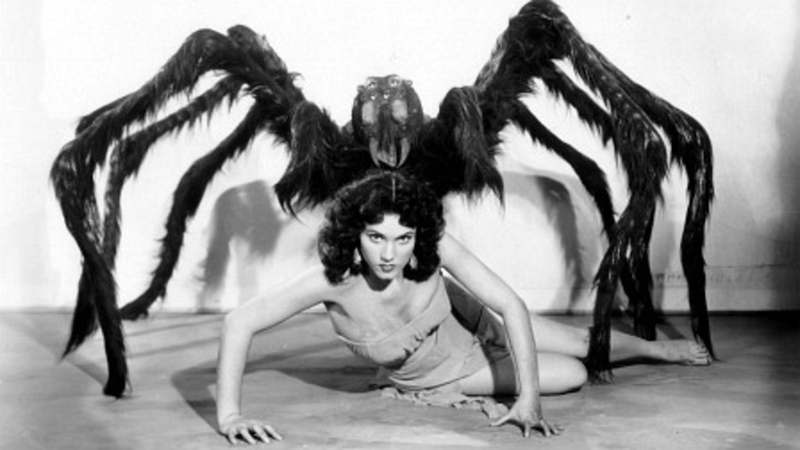
The stories told in 1943's The Spider Woman and, later, Mesa of Lost Women each bear a certain resemblance to the stories of shapeshifting, devouring jorōgumo. In The Spider Woman, Sherlock Holmes discovers that a string of mysterious suicides are actually the work of Adrea Spedding, a woman who targets and seduces gamblers, convinces them to pawn their life insurance policies, then infects them with a spider venom so agonizing it drives them to commit suicide. Though not a literal spider, Adrea weaves a web of lies and manipulation for financial gain rather than a particular hunger for flesh. But to a patriarchal culture and cishet male audience, she embodies the monstrous feminine to become their worst nightmare. To the rest of us, well, we can read her as something else entirely. *wink wink*
By contrast, Mesa of Lost Women takes a more literal approach to the idea of "spider woman." Dr. Aranya is a mad scientist whose lab is buried in the fictional "Muerto Desert" where he's not only been engineering giant spiders, but is actually attempting to create a superrace of spider-women with regenerative capacities, over whom he retains complete control. He attempts to sell this idea using Tarantella as a kind of prototype, the ideal embodiment of his ideal slave.
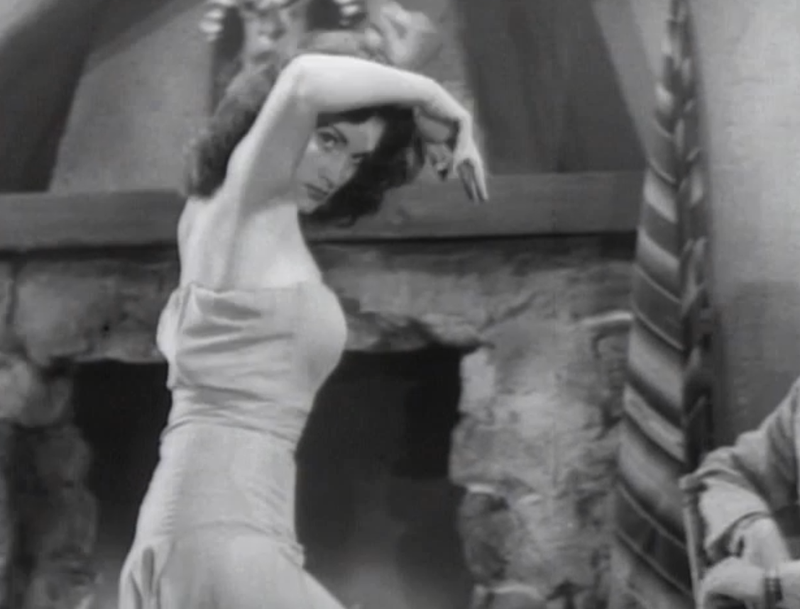
It's not without significance that she is darkly complected but not darker than a paper bag; that her character is hypersexual, but her loyalty to her master makes her duplicitous and cunning. She weaponizes her sensuality, seduces men through dance, and threatens to ensnare them in her web.
Reflected in the film are some intensely racist, intensely fetishistic character portrayals that ultimately betray its creators' limited imaginations. But at its core, Mesa of Lost Women is a rendition of Frankenstein with Tarantella serving as an equally sympathetic rendition of the Creature. Though the lab is destroyed in the end, it's suggested that at least one of the spider women survives. This is a trope of the genre- "the monster always escapes," "the killer always comes back"- but also indicates the specific anxieties projected to spiders as a motif: the horror of the fact that they existed long before us, will continue to exist long after us, and were they to rise against us, we'd be undeniably, unequivocally doomed.
The decade between the production of The Spider Woman and Mesa of Lost Women was a significant one, to say the least, and- with inspiration drawn from the latter film- 1955's Tarantula is wildly emblematic of that cultural shift.
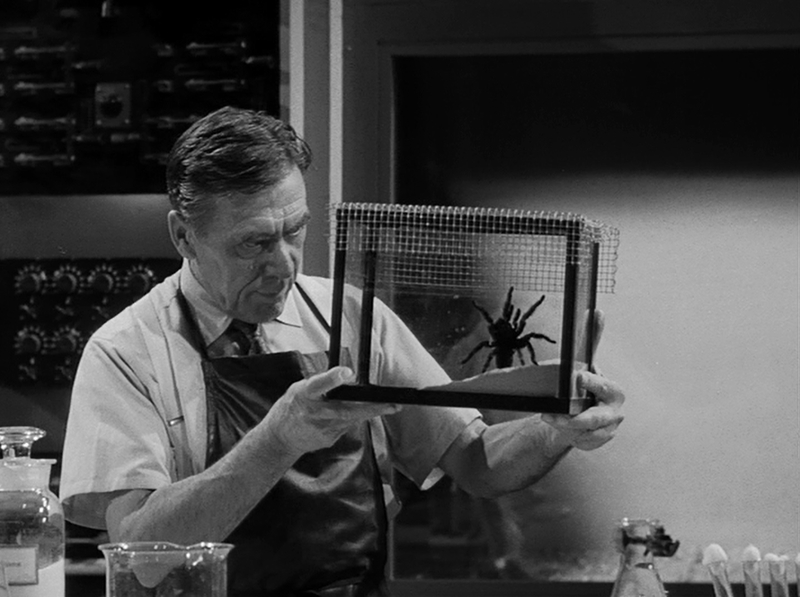
Set in the Arizona desert, Tarantula is one example amongst a generation of sci-fi-inflected ecohorror films- from 1954's Them to Attack of the Giant Leeches in 1959- demonstrative of atomic anxiety in the wake of America's horrific bombing of Hiroshima and Nagasaki. Much as the horror in Frankenstein reveals Enlightenment-period anxieties about humanity's evolving relationship with science and technology, American kaiju are equally indicative of this persistent, resounding terror—particularly concerning our impact on the natural world.
At no other point in history had human engineering been so extraordinarily capable of impacting and/or destroying the world, and at no other point in history were people more readily cognizant of this capacity. Among the most sensational stories about the horrors of the concentration camps were the torturous, sadistic medical experiments conducted by Nazi doctors (their inspiration taken from the white doctors who did the same to their slaves), with the specter of Josef Mengele haunting the national consciousness as a more-monstrous-and-more-terrifying-for-being-real rendition of Dr. Frankenstein. We might think of Dr. Aranya as representative of this absolute evil.
But Tarantula's Professor Deemer is more nuanced than his villainous predecessor in Mesa of Lost Women. Though a mad scientist, the doctor's experimentation is driven not by a desire for world domination but by fear of a future where overpopulation means food production can't meet demand and "the disease of hunger" runs rampant. Deemer theorizes that if he can modify the life cycles and size of his experimental subjects by inducing gigantism, then perhaps the food supply can be modified to keep up with human consumption.
In other words, he's possessed by delusions of ambition and do-gooder saviorism that, in the context of the film, leads to personal and collective disastrous consequences.
After successful trials in different animal species, Deemer's two colleagues infect themselves with the serum as part of a human trial, ultimately leading to their gruesome deaths. During a violent confrontation, Deemer himself becomes infected, and the lab is destroyed. In the ruckus, their most successful subject, the tarantula, escapes and continues to grow to monumental proportions. Like Dr. Frankenstein- like Oppenheimer, "the father of the atomic bomb"- Professor Deemer loses control of a creation he should never have endeavored toward in the first place.
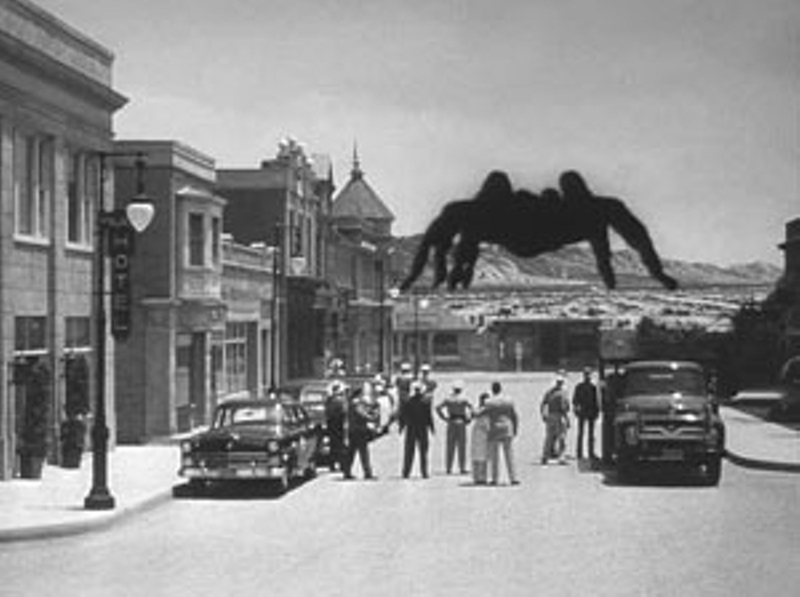
For this trespass, he first becomes a monster and is then devoured by his figurative child. One of my favorite aspects of this film is that when the tarantula attacks, the camera's gaze shifts to look upon the person being consumed from inside the creature's devouring mouth, a movement Jordan Peele employed most recently to great effect in Nope.
In the end, explosives aren't enough to stop the beast, nor the standard bombs dropped by the US Air Force, whose intervention can only be described as sudden and inexplicable (except for the fact that this is a Code film). They arrive just as the enormous spider approaches the town limits, and though their standard bombs prove ineffective, the arsenal of napalm they drop engulfs the creature in flames to save the day.

Tarantula is unequivocally demonstrative of the truly bizarre, deeply haunted nature of American culture in the '50's, a time that saw enormous schisms between the national narrative being produced and exported and the realities of social life. The act of suppression is an act of compulsion, and what can be seen in these films at their best- censored though they may be- is an active attempt to grapple with the nature of atrocity. Does the tarantula symbolize the Nazis or the atomic bomb? Is Professor Deemer a Mengele or an Oppeheimer? What are the implications when that aspect of the story changes? When binaries of good/evil begin to blur?
By contrast, the most boring renditions of these films are simply illustrative of the culture of active suppression in their attempts to revise the atrocity that was the atomic bombing into something clean and moral, something palatable and easy to digest. We Americans Are Heroes Who Saved The World From The Monster That Threatens To Devour Us All. We could not possibly be monstrous ourselves.
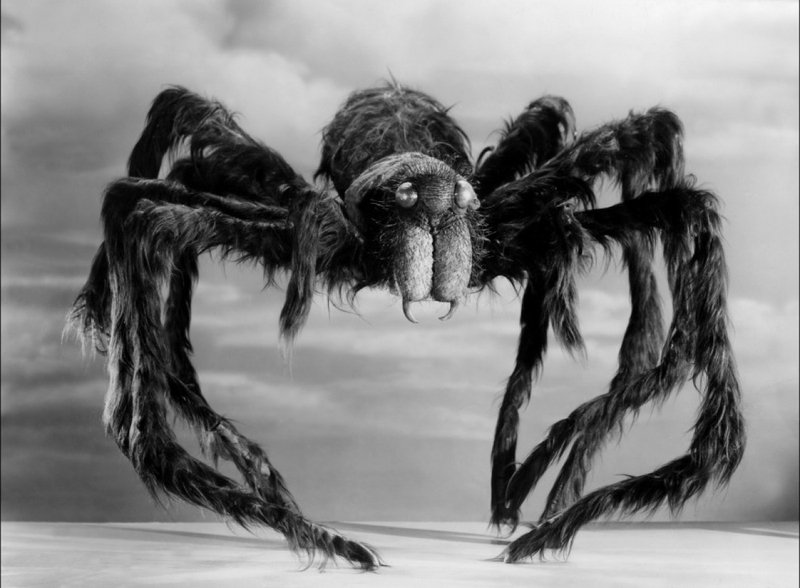
As is the tradition in horror, the years and decades following Tarantula have seen a litany of other films made in its image, from Earth vs. the Spider in 1958 and 1975's The Giant Spider Invasion, to Arachnophobia in 1990 and Eight-Legged Freaks in 2002, and all the glorious made for TV movies in between. Almost unilaterally, these projects up the ante on both the hilarity and the terror. What's a single giant spider in the face of a swarm of giant spiders? As one terrorized character from AIP's Earth vs. the Spider declares,
"We have to put an end to it, otherwise there may be more giant spiders coming into the world. They may even be hatching from their eggs in some remote spot right now. You realize how easy it would be for them to overcome us humans? And instead of being the hunters, we become the hunted. They'd be our masters, they'd live on us!"
Given the climate catastrophe we find ourselves enmeshed within, it makes perfect sense that we'd find ourselves on the cusp of another golden age of ecohorror. What strange new horrors are "hatching from their eggs in some remote spot" as I type and you read these words? Only time will tell.
I can say with confidence, however, that the new crop of spider horror will likely carry on this tradition of mining terror from our impact on the world around us and its impact on us. Keep your eyes peeled for the hairy legs creeping over the horizon of horrific delights!






